The vast majority of abandoned buildings are interesting in their own unique way, but for me at least, old houses probably offer the most. The remnants of lives lived, and sometimes sadly lost, posses a poignancy and personal element that shuttered up theme parks and resort towns often lack.
In that past I’ve photographed a whole village lost in time due to death and job losses, plus a long-abandoned mountain settlement once home to a small population of forestry workers. And below is a similar set of images from a little hamlet that now sits silently in the mountains.
Nestled amongst the trees, narrow paths wind their way between the houses, and personal items scattered about each home offer hints about the lives of those who once lived there. Their probable age, interests and even how one of them looked. Everything rather unceremoniously left behind to slowly disintegrate and eventually disappear.
The structures themselves are already in a precarious state, denying us access to all second storey rooms, as well as a good few on the ground floor. It was just too risky. Yet considering the last sign of life there was thirty years ago, and some of the buildings have been standing uninhabited for over half a century, such decay is not the least bit surprising. Time alone of course takes its toll, but the storm we had at the end of the day also gave us a glimpse of how tough life can be up there, and that was nothing compared to the likes of typhoons and heavy snow — or indeed an earthquake.
So this is simply a record of how the hamlet is now, which of course is a far cry from how it once was. A past we will never know, but what remains is more than enough for speculation, and indeed the imagination.
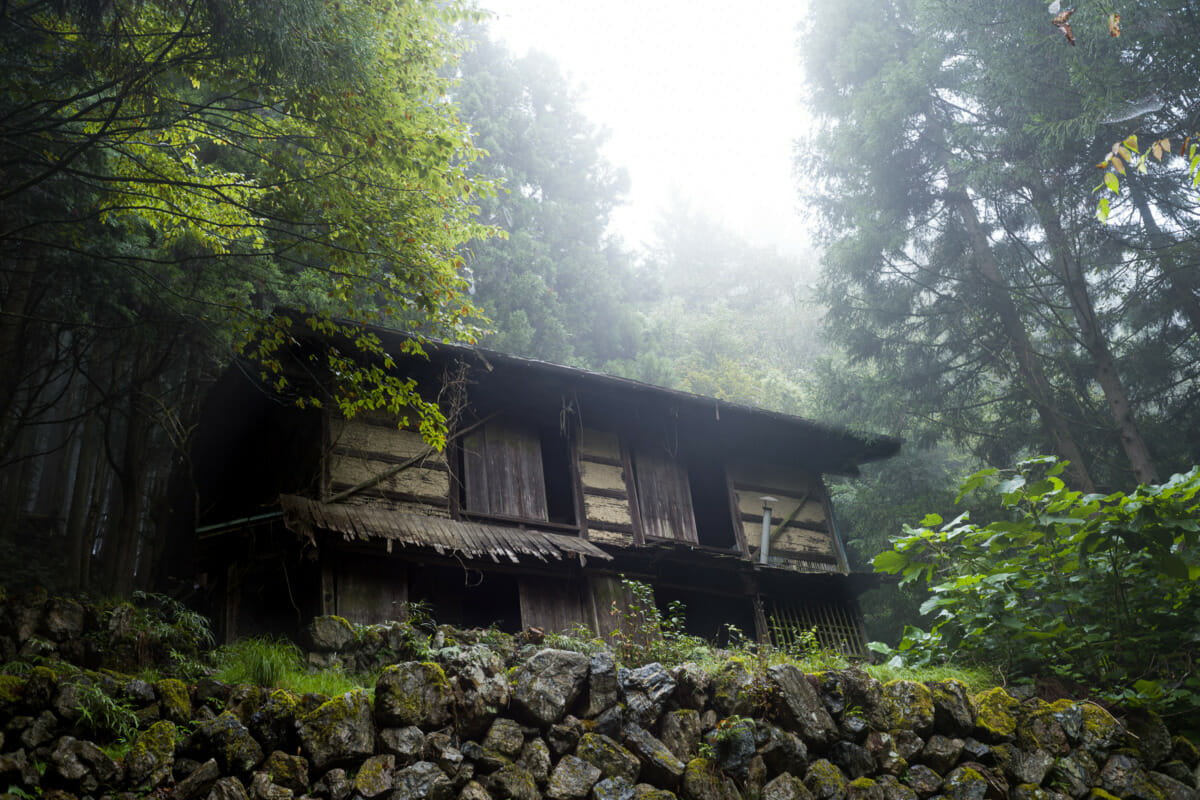
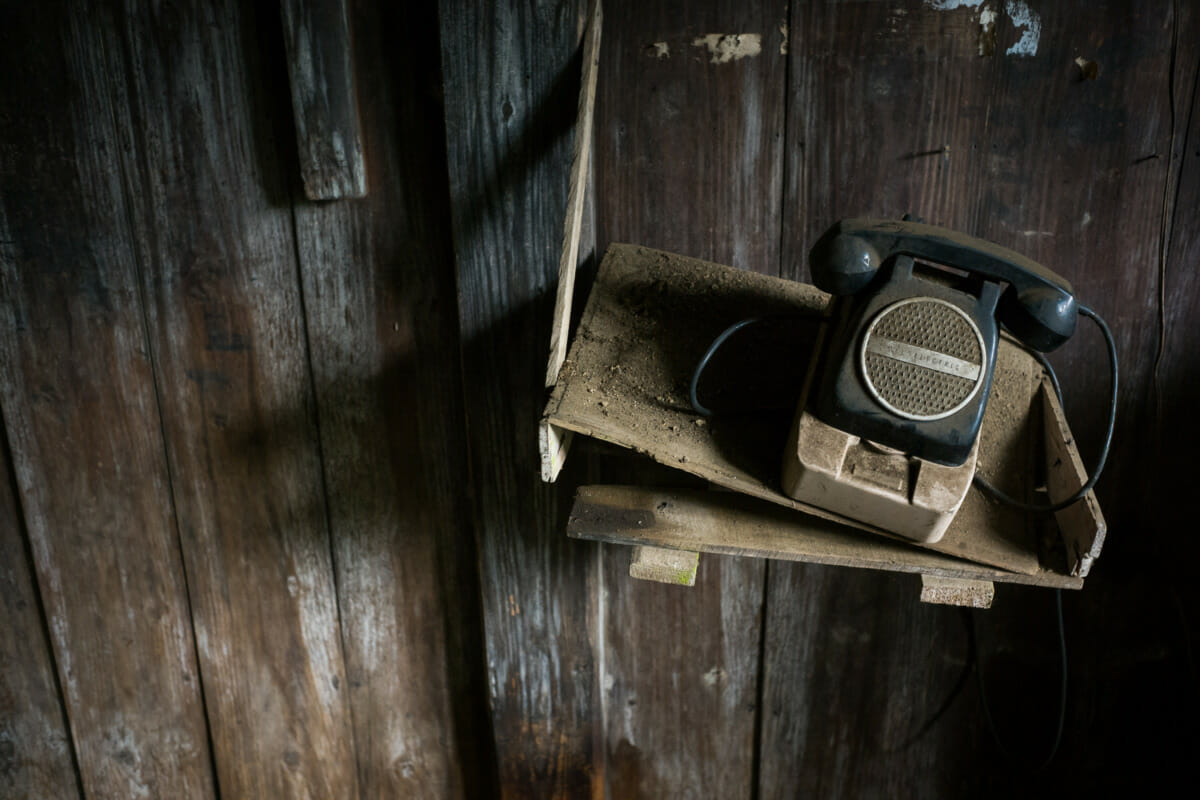
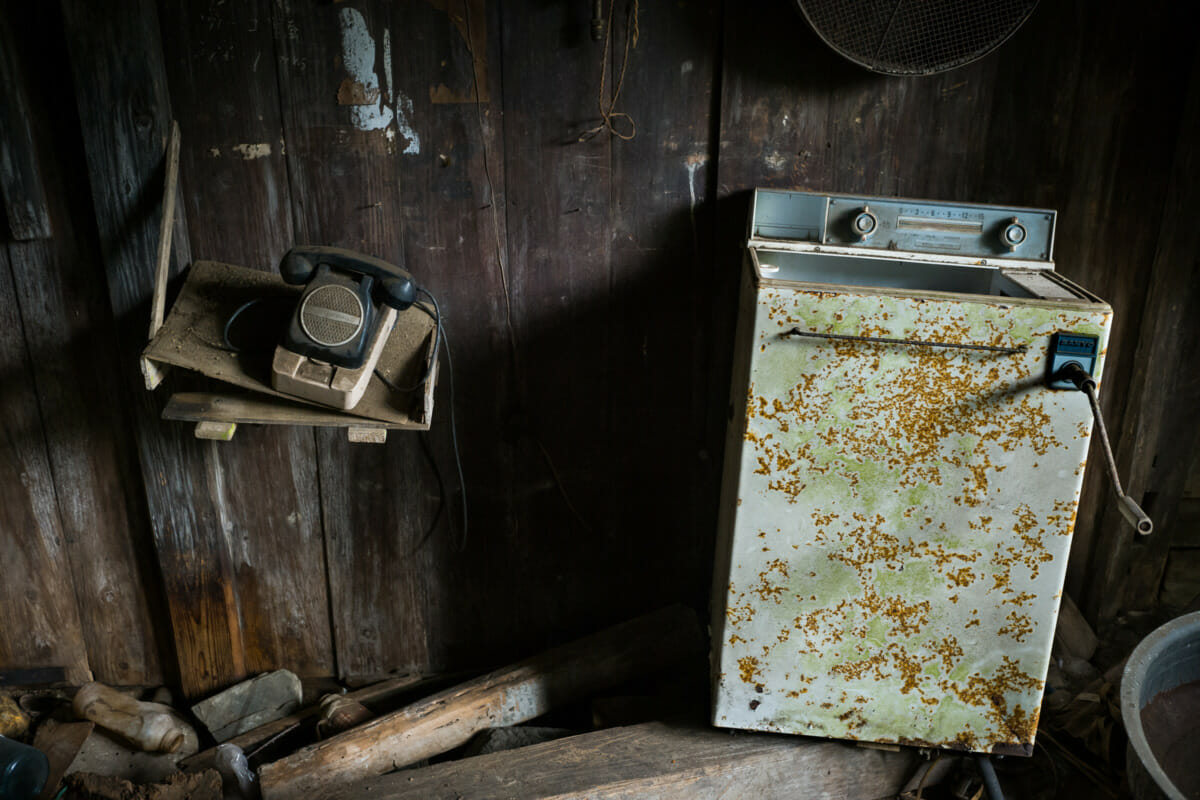

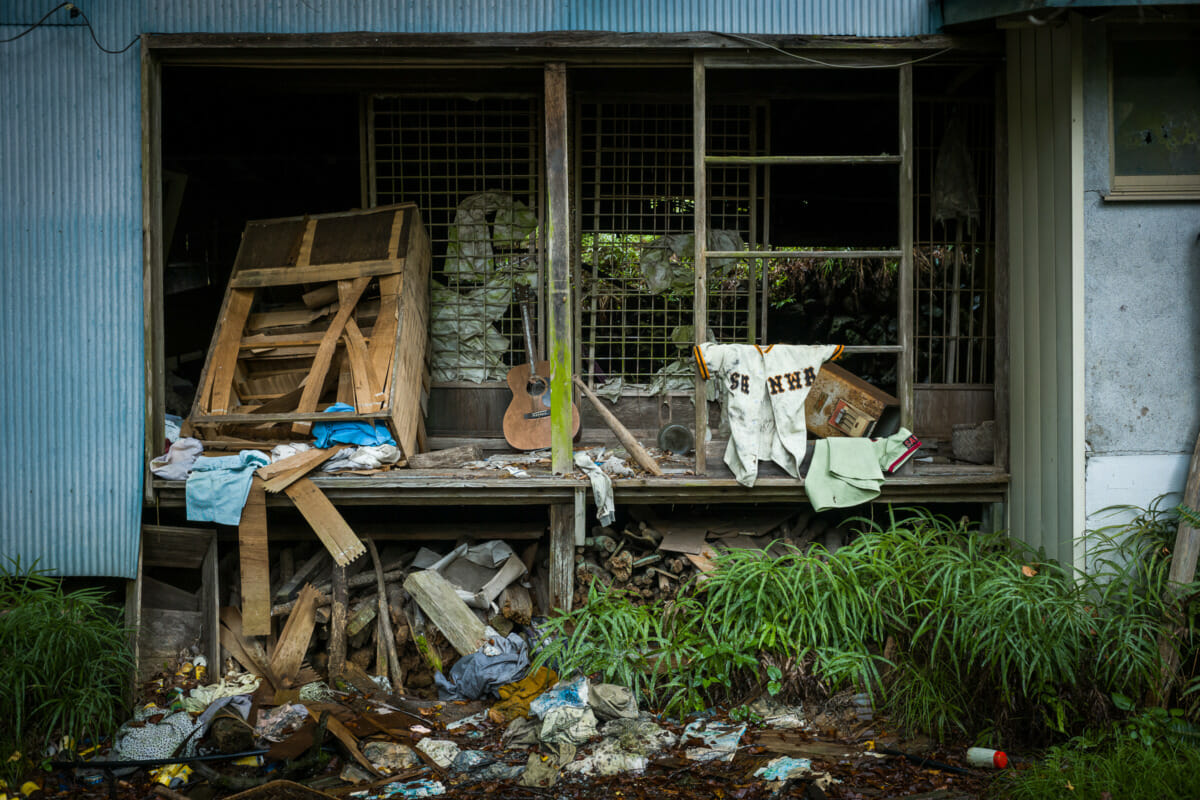
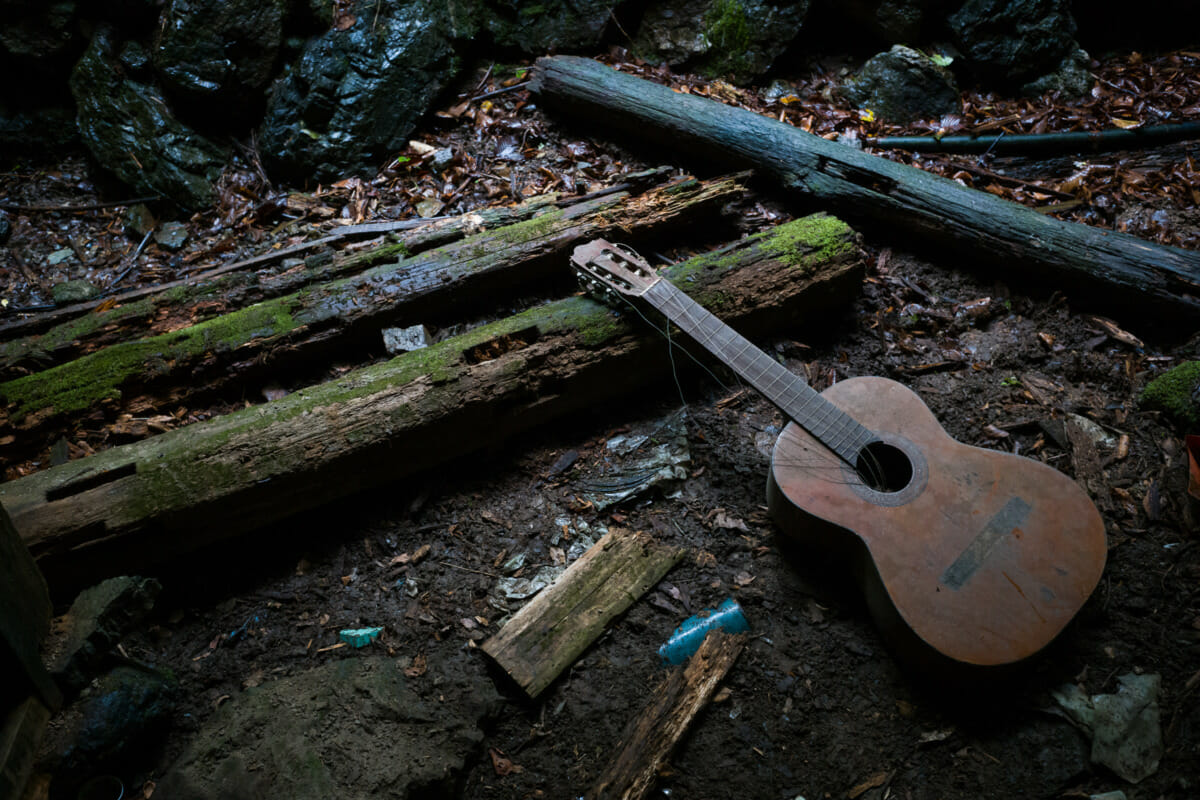
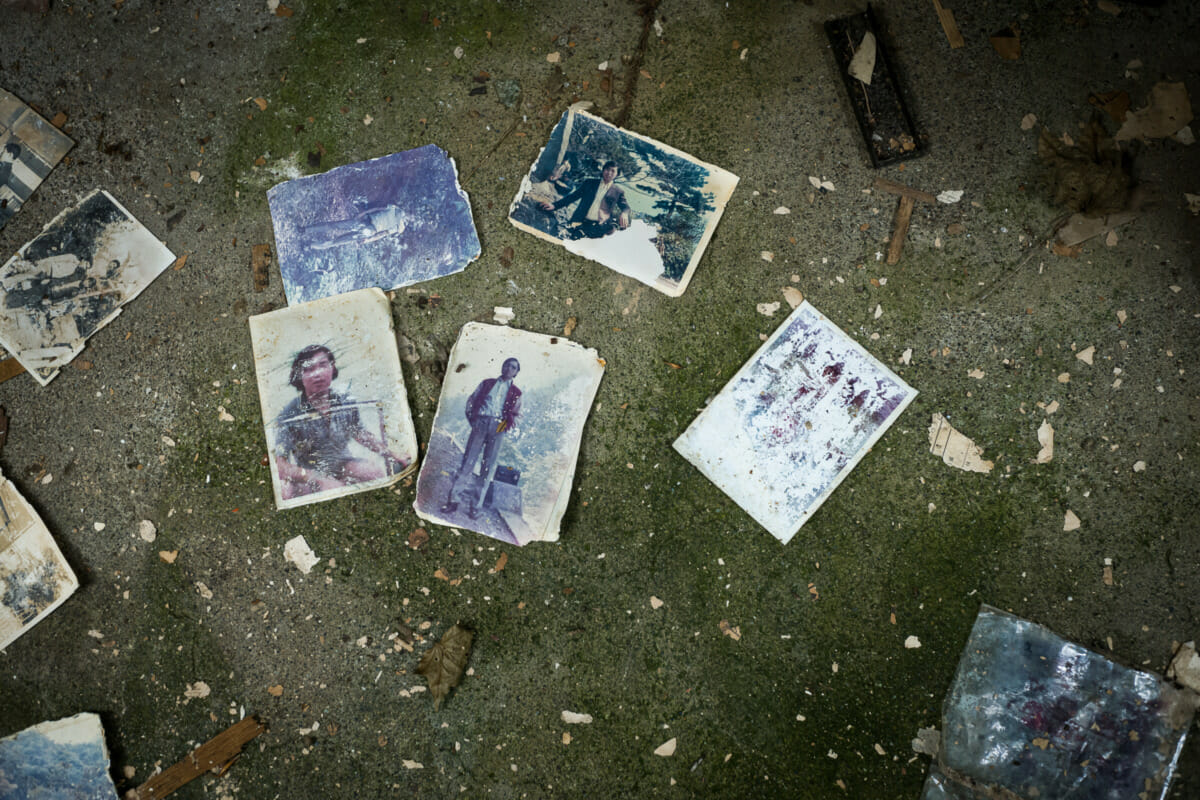
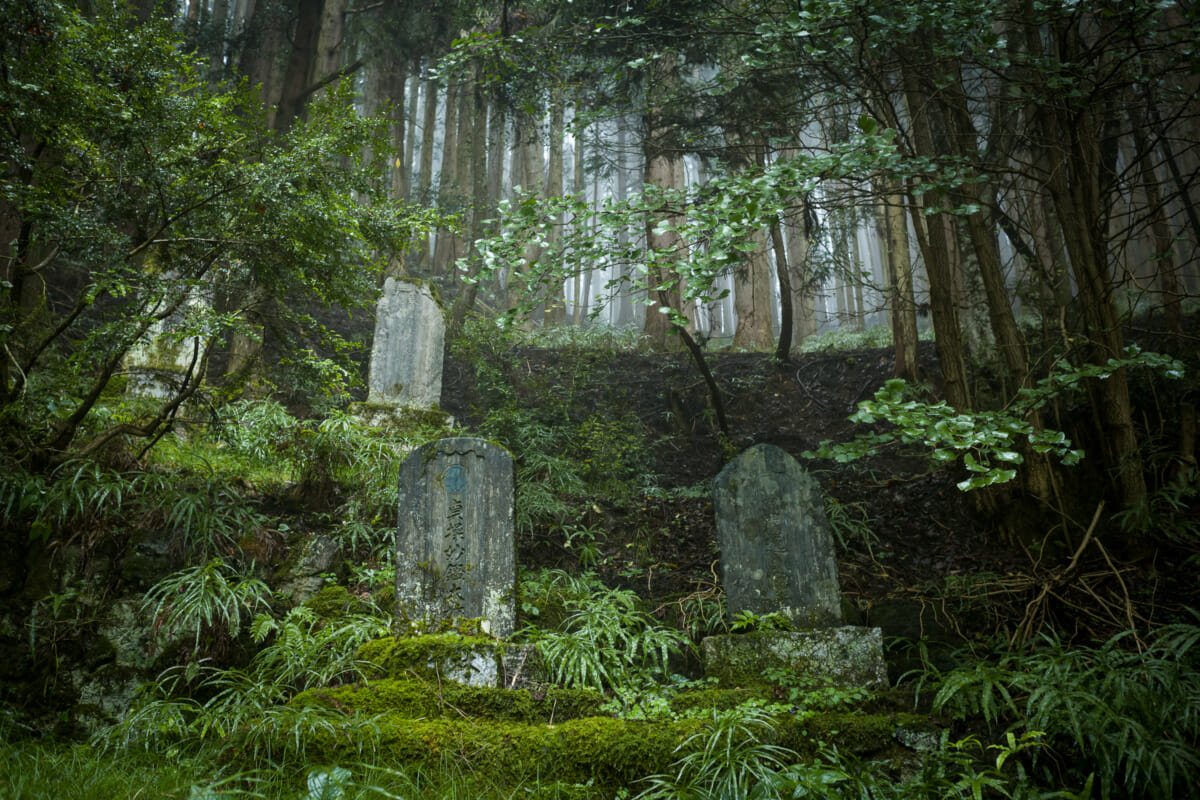
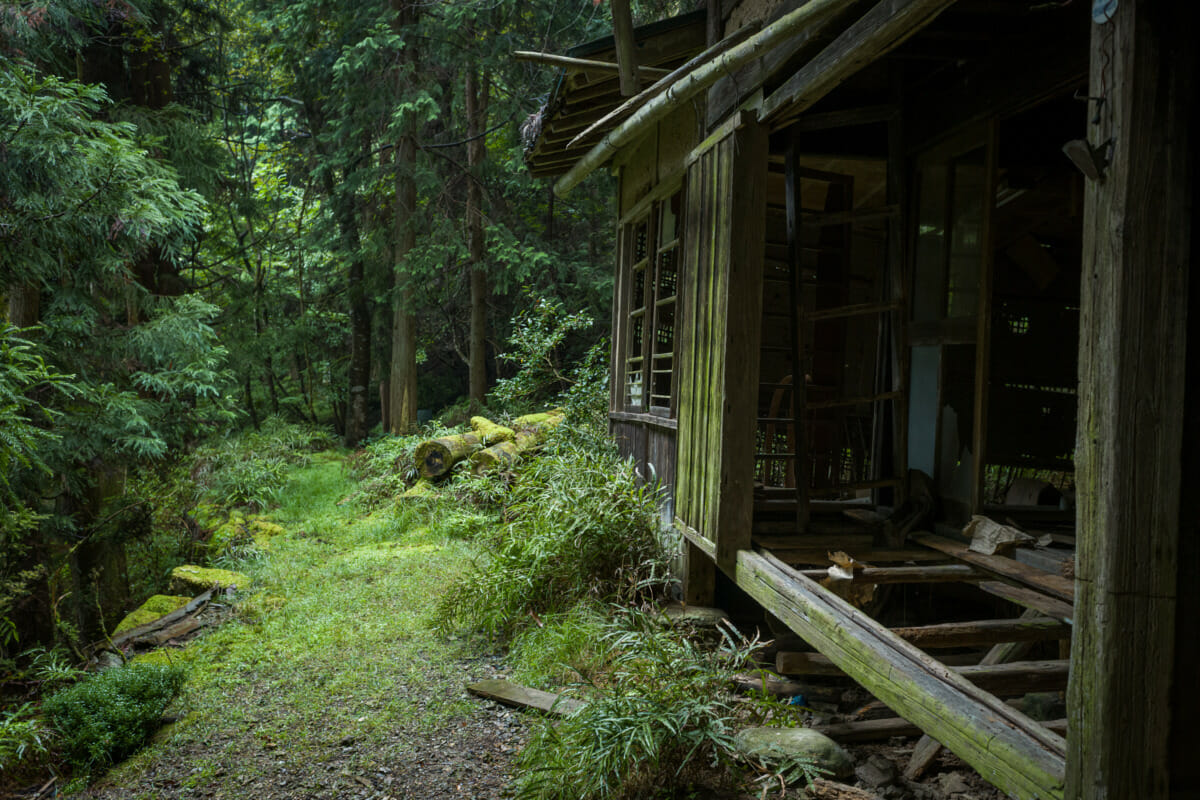
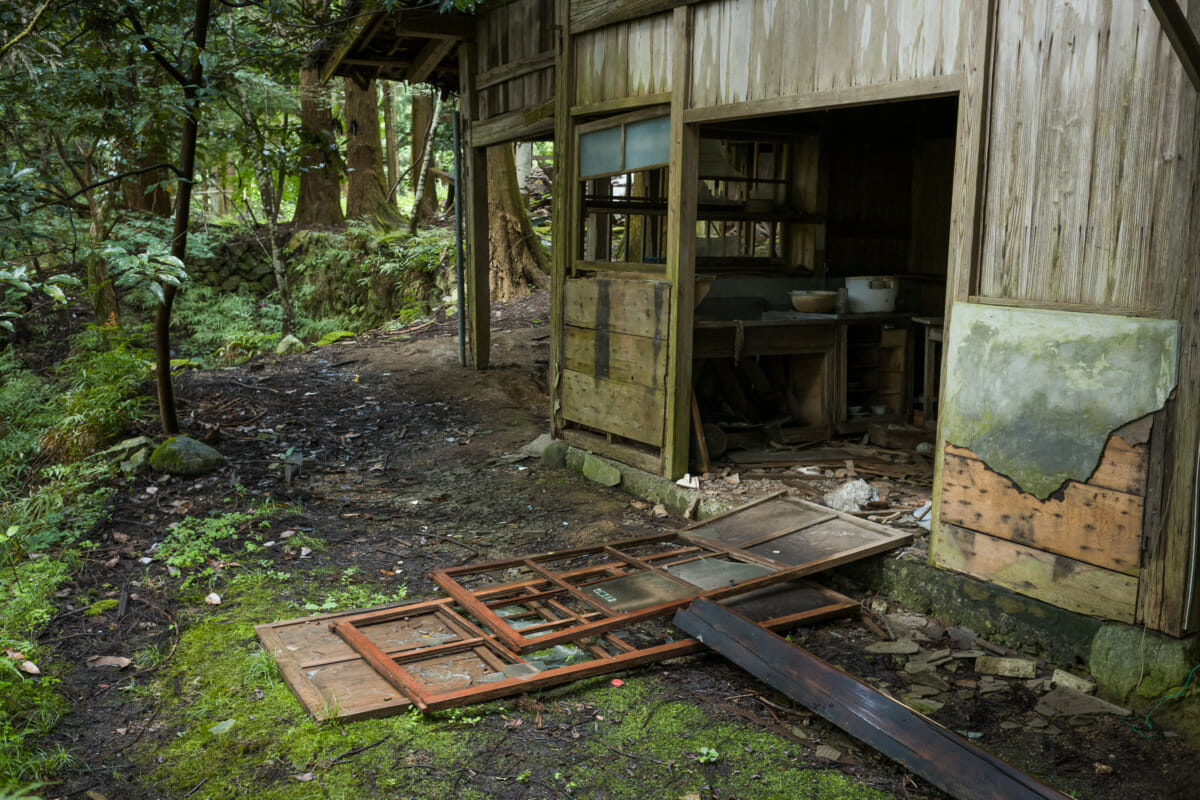
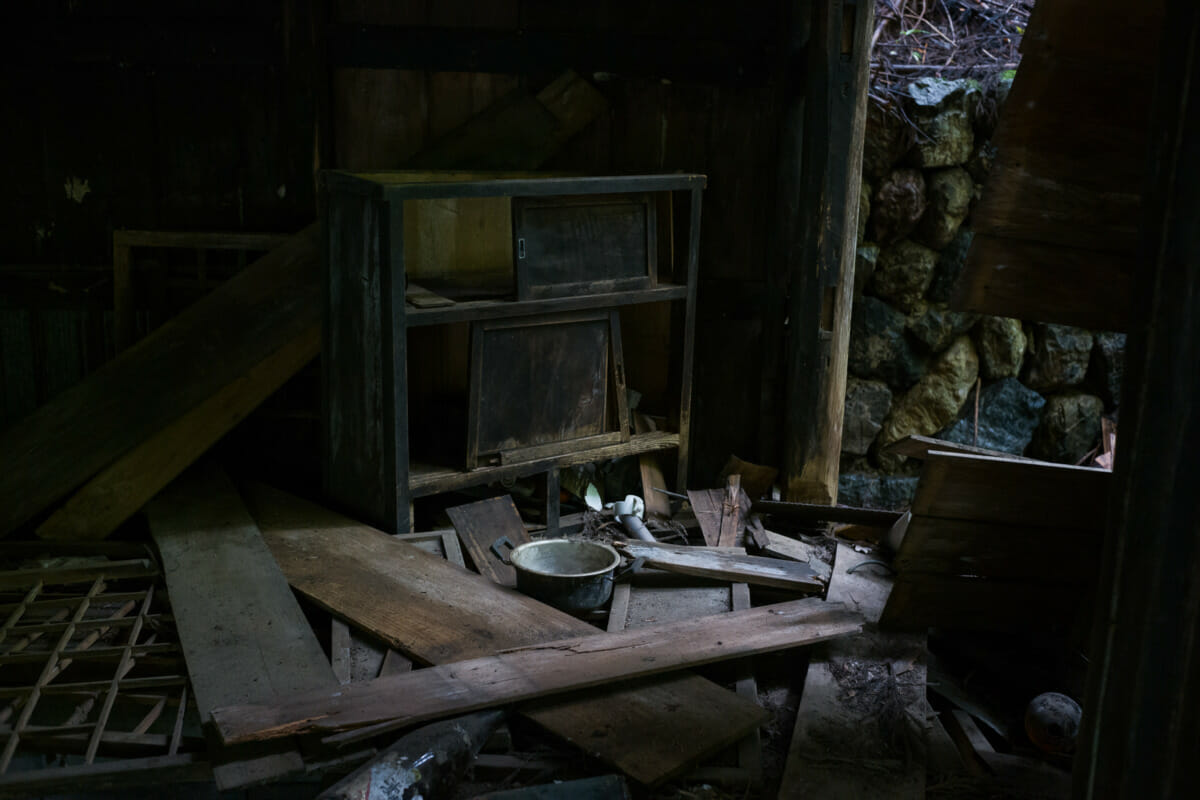
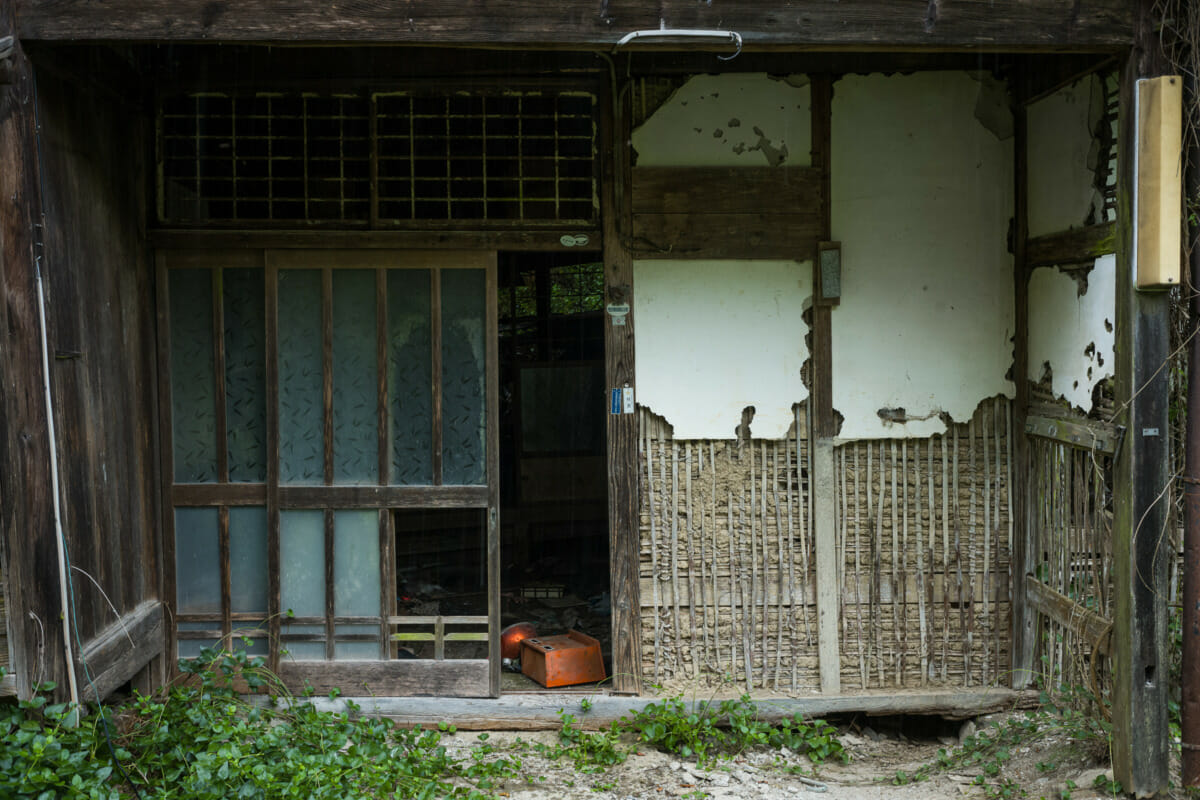
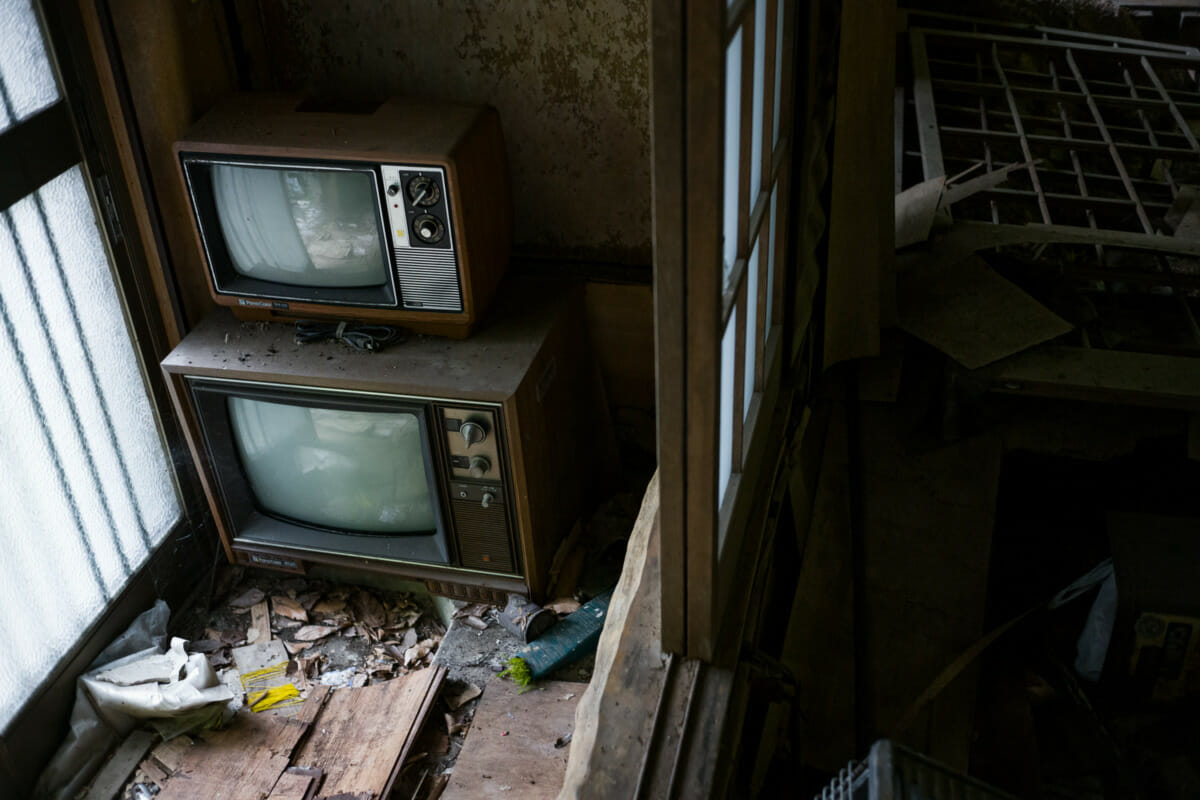
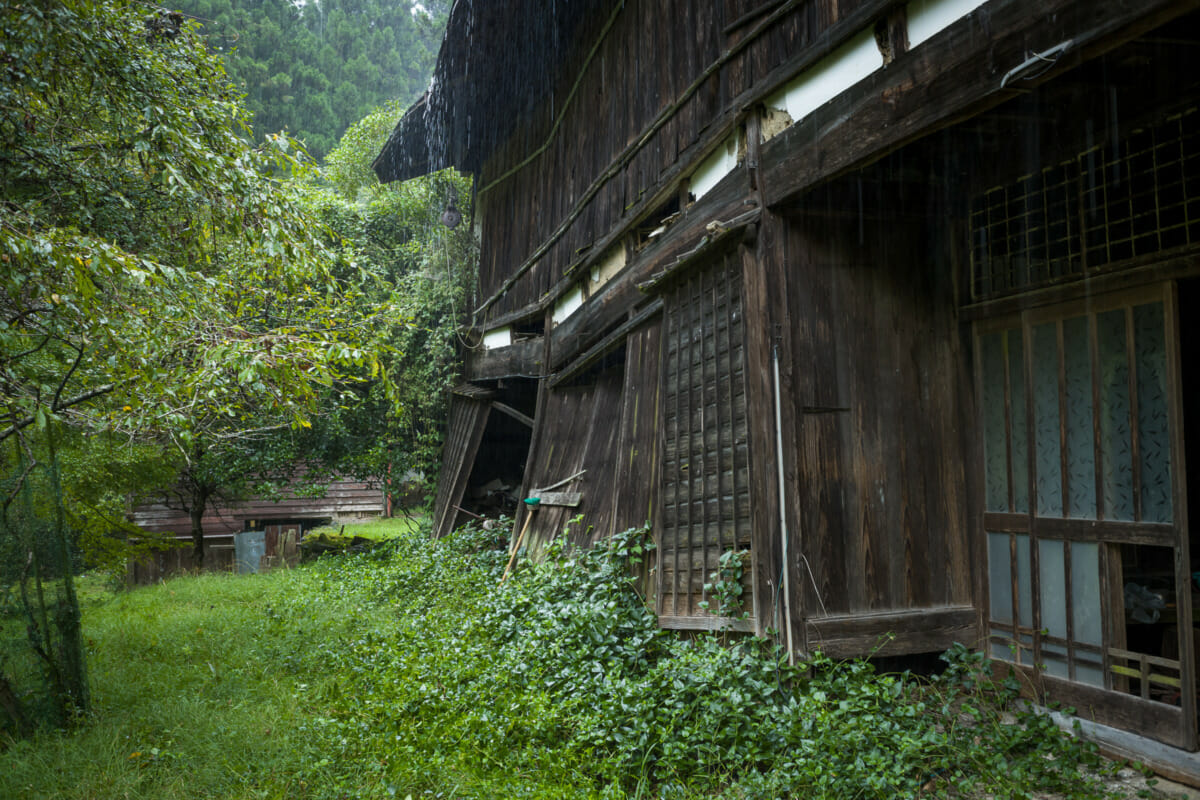
Linda says
I’m obsessed by the phone with no dial. I guess this is from when you just picked up and talked to an operator to connect a call. But they were still doing that there only thirty or even fifty years ago?
Lee says
Great, isn’t it? That was the first thing we saw, in the first house, so a fantastic start to the day. But yeah, my guess is either calling to the operator, or it was connected to work in some way.
The obviously very old washing machine next to it could mean it’s old enough to need the assistance of an operator, but the fact that the same phone was also in this abandoned mountain village (https://www.tokyotimes.org/the-silence-of-an-abandoned-japanese-village) suggests to me it was more work related. That said, we didn’t see any other phones, so I’m by no means certain.
Stephan says
Awesome set! I really like the telephone and tv shots but oh man that guitar! Great work as always.
Lee says
Thank you very much. Happy with that guitar shot. Lovely light, and it also help emphasise the quietness. But think I’d still have to go for the telephone photo!
Paul Hédouin says
Great job.
Strangely, the place look comfy to me, in a certain way. And I love when there still are some pictures of people who were living here : it’s like their life prints are still haunting the area.
Lee says
Thank you! The heat and humidity made it a bit of a struggle, but I agree, it was a genuinely nice place to explore. And yeah, finding photos like that is always special. To see things left behind is fascinating, but to see the person whose home and stuff it was is another thing altogether.
Eric Brightwell says
Have you visited and photographed any abandoned Japanese ruins outside of Japan? This reminds me a bit of Morisaka, an abandoned Japanese logging operation in Taiwan. Nowadays it’s known as Lintianshan, in Hualien County.
Lee says
I have, yes, but never any places so full of personal items like this. They’ve mostly been empty shells which don’t appeal all that much.
That sounds like it would be a very interesting place to explore and shoot. A search led me to other abandoned places in Taiwan which was a very nice diversion to say the least.
Eric Brightwell says
To be certain, there are far fewer personal objects in Morisaka, if memory serves me correctly. I remember shoes inside a door, pin-ups, and some other things like that — but probably more stripped of stuff than ruins in Japan, which so often seem to have merely been walked away from.
Morisaka is, though, a nice place to visit. An abandoned train, empty buildings, and a fragrant jungle of Taiwanese cypress that the Japanese occupiers were fond of cutting down and shipping back to hapan.
Lee says
That does sound very interesting. I like the sound of the train too. A real sense of time and history.
john says
If that is rain coming off the roof in the last picture it certainly was a hamlet moment
It looks like Erit (Kitaro the Vampire Slayer) has been leaving his guitars out in all weathers!
On the VDGG theme I immediately thought of ‘House with no Door’ to go with the ‘phone with no dial’ and I did for a second think that the washing machine was a remote hand cranked power generating device for the said phone!!
Lee says
It was, heavy rain too, but thankfully it didn’t arrive until we were just about finishing up.
I like that idea. It’d certainly keep calls to a minimum. There’d be no unnecessary communication if it meant an exercise session at the power generator first!
ellen says
There are so many stories in these photos. Thanks so much for sharing.
Lee says
You are very welcome.
Thanks. And yeah, there really are. Little snippets of lives we can only speculate about.
cdilla says
A great set of photographs. Quite eerie in their rather advanced state of decay and the apparant stillness of the rain.
Interesting to see the same phone and TV in the other abandoned village. Were they proximate? The “dial” looks like a speaker grill with a volume dial below rather than the usual plain blank you get in old corporate phones.
“life prints” – a wonderfully evocative phrase.
Lee says
Thank you. It was definitely atmospheric. Very quiet too. Well, it was until the storm hit…
Yes, they weren’t that far away. At least not by car anyway. So that could explain them. Sort of old-style walkie-talkies perhaps?
And yeah, I totally agree. “Life prints” conjures up all kind of thoughts and ideas.
Colin Stanners says
These are wonderful photos Lee. Impressive how they can carry a lot of emotion without having any of the people directly in them – the power of memories?
So many of your works seem to posess a strong yet delicate “wabi-sabi” quality.
Lee says
Thanks a lot. And yeah, they really do carry a lot of emotion. Presumably because those people are now (long) gone, and like you said, only their memories remain.
That’s very good to hear. The whole idea of wabi-sabi fascinates me, so for that to come through in some of my photos is very nice to say the least.
Jay Klein says
The photo of the gravestones with the misty and mystical-looking forest in the background is great.
How many distinct buildings were there?
Lee says
Thank you. Yeah, the backdrop to those graves was really something. Definitely added to their poignancy as well.
If I remember correctly it was eight. A couple were completely sealed, plus there were a few plots of land where houses presumably once stood.
Z says
The photos left on the ground of real people is the craziest thing to me. Those photos had been there for decades, no-one really laying eyes upon them. It certainly would be almost impossible to find out their identities after all these years. Just snapshots of a different time. I wish I could more concisely put how those images you’ve taken make me feel. Great work, Lee.
Lee says
Thanks a lot!
I know what you mean. There’s so much about exploring these places that I can’t really explain. Not properly, anyway. And I’m completely with you on the photos. They make it so much more real, and yet at the same time not, ‘cos as you said, there’s almost no way to find out who those people are, what their story was etc. But they do add to the speculation, and prompt the imagination, which is definitely a bit part of abandoned places like this.